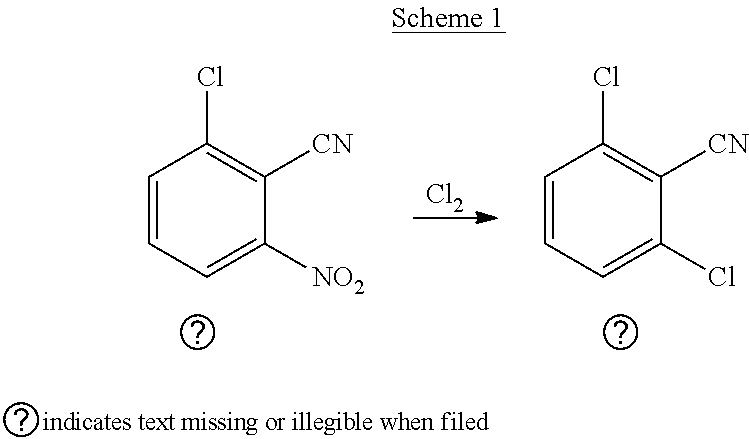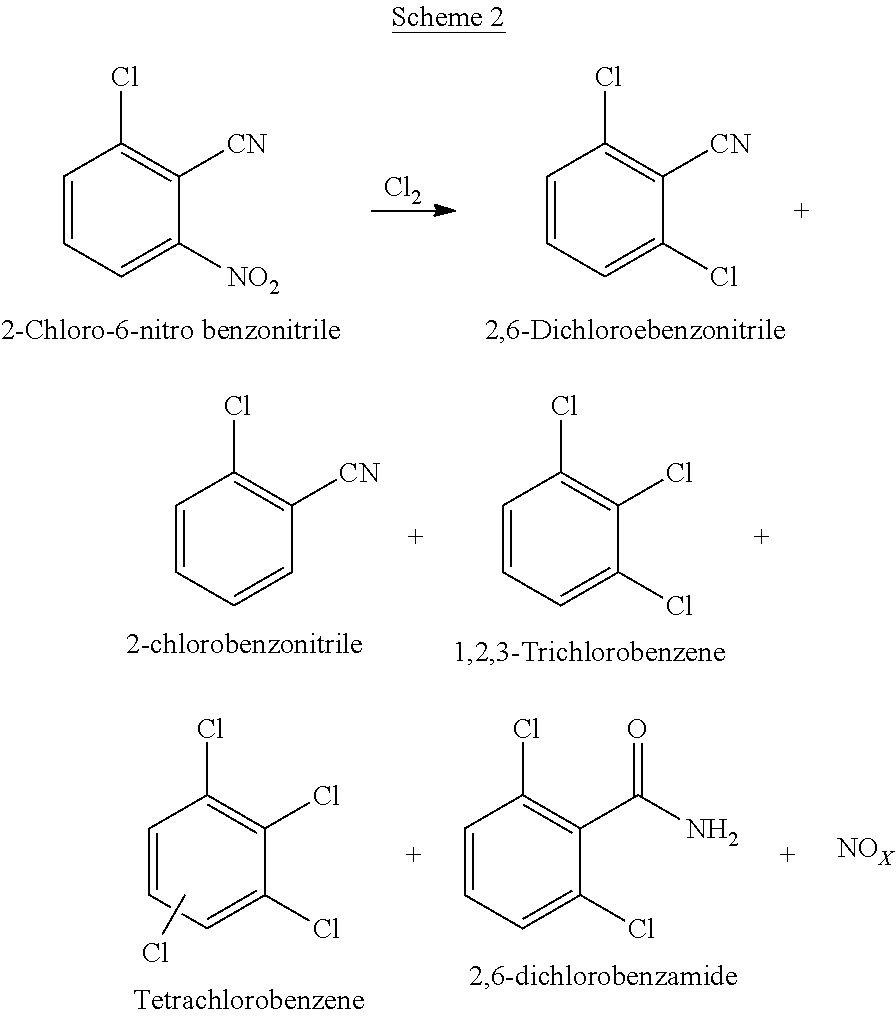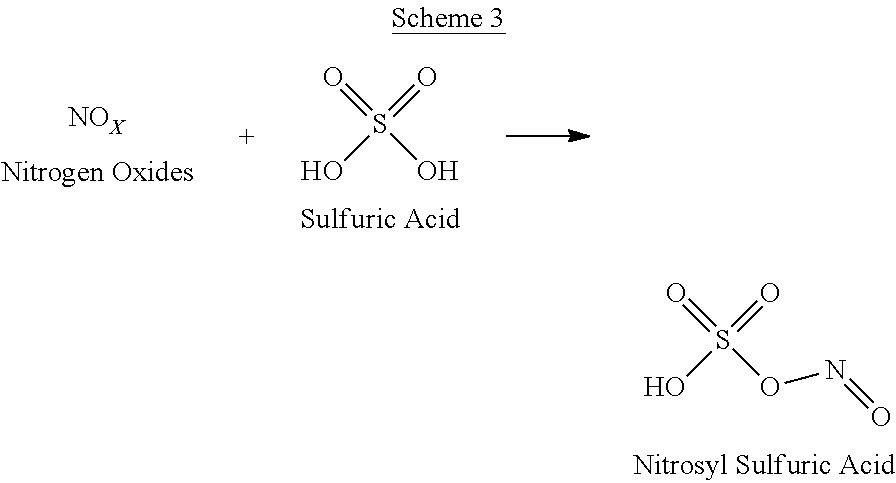Process for preparation of 2,6-dichlorobenzonitrile
a technology of dichlorobenzonitrile and halogenated benzonitrile, which is applied in the preparation of carboxylic acid nitrile, organic compound preparation, carboxylic acid nitrile, etc., can solve the problems of limited sources of costly raw materials such as 2,6-dichlorotoluene, and many require a significant investment in special equipment and/or costly raw materials to produ
- Summary
- Abstract
- Description
- Claims
- Application Information
AI Technical Summary
Benefits of technology
Problems solved by technology
Method used
Image
Examples
example 1
[0074]The process is following examples demonstrate the impact of temperature in the reaction.
TABLE 2TemperatureCl2 PurgingSelectivity Towards 2,6-YieldExpt.° C.Time (hr)Dichlorobenzonitrile %%1150-155867—2170-1751690743190-195996.4881
[0075]In the above examples, nitrosyl sulfuric acid is produced and isolated as a solid from the sulfuric acid scrubber at molar equivalents to the NOx liberated.
example 2
[0076]In 1 lit 4-neck RBF with overhead stirrer, TP, vigorous column and having Con. H2SO4 scrubber in an oil bath, 2-Chloro-6-nitro benzonitrile was charged and the temperature was raised. Then chlorine gas was purged slowly into the flask for consistent rate.
[0077]The resultant reaction mass was analyzed for 2,6-CNBN conversion to ≥99%; 2 6-Dichlorobenzonitrile observed as 73-80%; TCB as 9.4-10%.
[0078]After completion of reaction, the reaction mass was cooled to 100° C. and diluted with monochlorobenzene, neutralized by washing with 10% Aq. Sodium carbonate solution and decolorized with activated charcoal. This decolorized 2,6-Dichlorobenzonitrile solution was refluxed in methanol and crystallized at 10° C. filtered and dried in vacuum oven.
TABLE 3Example (#)12CNBN(mol)1.101.10Cl2(mol)2.192.19Reaction temp(□ C.)180190Purging Time(h)1212Reaction massTCB9.410.09compositionDCBN80.0473.49CNBN1.030.86Product QualityTCB0.030.05(after work-up &DCBN98.998.6crystallization)CNBN——Yield of D...
example 3-6
[0080]2-Chloro-6-nitro benzonitrile (obtained from the process described in example 7) was charged in RBF equipped with Cone, Sulfuric acid & caustic scrubber; Overhead stirrer & electrically heated Oil bath and the temperature was raised at 195° C. Then chlorine gas was purged for 10-16 hours in controlled order with varying rate. The resultant reaction mass was analyzed for 2,6-CNBN conversion to 99% & 2,6-Dichlorobenzonitrile showing 92-94%. The reaction mass was diluted with monoehlorobenzene at 100° C.; neutralized by washing with 10% Aq. Sodium carbonate solution; decolorized with activated charcoal.
[0081]This decolorized 2,6-Dichlorobenzonitrile solution was refluxed in methanol and crystallized at 10° C., filtered and dried in vacuum oven.
TABLE 4Example(#)3456CNBN(mol)10.99.99.99.9Cl2(mol)21.819.819.819.8Reaction temp (° C.)190190190190 Purging Time(h)11141611.5Reaction massTCB0.811.31.45compositionDCBN94.194.993.495.3CNBN10.60.20.87Product QualityTCB0.0050.0010.080.03(after...
PUM
| Property | Measurement | Unit |
|---|---|---|
| temperature | aaaaa | aaaaa |
| temperature | aaaaa | aaaaa |
| temperature | aaaaa | aaaaa |
Abstract
Description
Claims
Application Information
 Login to View More
Login to View More - R&D
- Intellectual Property
- Life Sciences
- Materials
- Tech Scout
- Unparalleled Data Quality
- Higher Quality Content
- 60% Fewer Hallucinations
Browse by: Latest US Patents, China's latest patents, Technical Efficacy Thesaurus, Application Domain, Technology Topic, Popular Technical Reports.
© 2025 PatSnap. All rights reserved.Legal|Privacy policy|Modern Slavery Act Transparency Statement|Sitemap|About US| Contact US: help@patsnap.com



